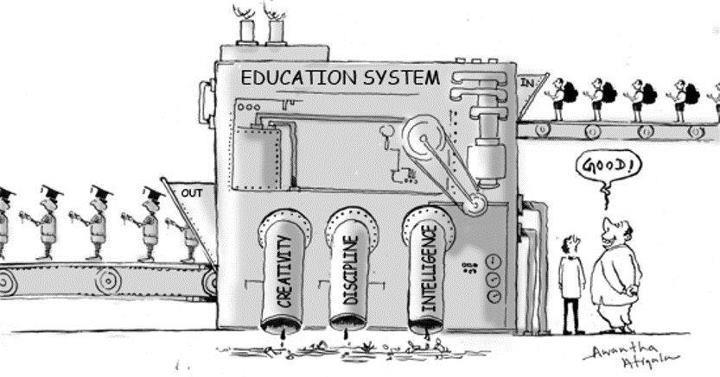
As a future elementary teacher, the talk on “Change: Making Education More Equitable” made me think about how the education system is still a flawed system. I have personally seen teachers who have been in teaching for 20+ years who still go toward the “one-size-fits-all” teaching approach. A classroom needs to be flexible to meet the needs of all learners whether it’s to accommodate a student’s learning need or disability. I understand why teachers are hesitant to not allow students to take control of the classroom. However, I believe many teachers don’t acknowledge that the classroom belongs to the students’. Dr. Cathy Davidson spoke about the curriculum being differentiated. I am currently learning in my courses how to differentiate my lesson plans to suit individual needs. The system has to also understand as Dr. Davidson said that the “one-size-fits-all” is not for students or teachers. If all teachers teach using the same curriculum, the instruction is not tailored for each child’s social, emotional, and academic needs. As educators, we must know what our students need instead of following a scripted approach. Students deserve the right to have agency for their learning. As educators, we must go beyond the textbook and allow children to show their learning in various ways. The above image represents the school system during the Industrial Era. Schools were treated as a machine constructed by industrialism with the goal to make the children into adults that factories could use for economic means. Dr. Tressie Mcmillan Cottom states that scientific learning is used as an excuse to not focus on human-centered learning. This was interesting to think about and as a future teacher in the 21st century, I am constantly told to incorporate technology because students need these tools for future employment. The “factory model of education” still exists today even when classrooms are becoming more and more diverse each year.
How can we make education more equitable? As Dr. Davidson states that firstly, we must recognize that the education system is not equal. This is important because we are willing to step back and say, “Yes, there is a problem, lets fix it” rather than just list ideas that we might never take action on. The education system needs to be more open-minded based on my personal experience in elementary schools. There are many schools that hire teachers of color as a “diversity hire.” As a person of color, I am excited to be a representation for students of color and encourage them to envision themselves to work in any career field. Being a person of color in my courses, I do feel uncomfortable at times because the majority of my classmates are white females. I feel like I am doing something that might not be for me however when I enter an elementary classroom, I see how young students accept all teachers and just want to learn more about them. If children can be open to diversity, why can’t adults? As a future educator, I hope to become an advocate for my students to make sure they receive all resources and help they might need to fully reach their potential.

Dr. Cottom said that there needs to be differentiated funding for people and I couldn’t agree more. Higher education has a long way to understand that there are different types of students and families to serve. I feel honored to have graduated from LaGuardia Community College because I firsthandly saw how much diversity was appreciated and acknowledged. Community colleges invite people in the community to come and share their experiences. Higher education should be open to the public. I found it remarkably motivating when Dr. Cotton said that instead of colleges saying the motto, “Work hard so you can get a job” they should say, “Work hard in college or not but isn’t it great that college is there to go to.” This mindset turns college from an individualist benefit to a collectivism benefit. If students are no longer viewed as “customers” then, teachers will also be able to hold better academic standards for their students. I found the above image to be relevant to the idea of collective benefit in the education system. There are many layers of stakeholders in education. Education policies should be redesigned to understand and focus on the role of each group. An educational institution should belong to all. Through a collectivist approach, schools become a long-term investment in compared to being short-term for a student’s grade. The education system has become too focused on grades and into a competition. As educators, we must redesign the education policy in order to turn institutions into a societal benefit. Instead of following the scripted “one-size-fits-all” approach to have better standardized results, we must focus on educational institutions to be targeted towards society in order to improve the quality of civil life for ALL.
I would like to end this blog post by saying how much I am inspired by the three incredible women as a future educator to do better in order to make education equitable. Thank you for this event!



Pingback: Food for Thought – The Futures Initiative